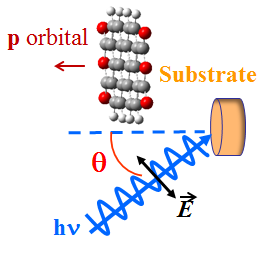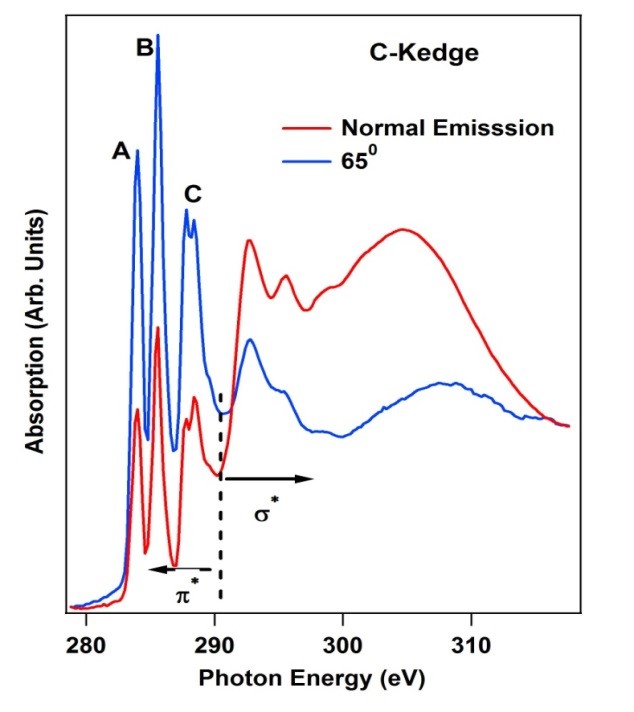Soft X-ray Absorption Spectroscopy
X-ray absorption near edge structure (XANES) or the near edge X-ray absorption fine structure (NEXAFS) is powerful tool to investigate inner shell excitation of an atom or molecule. The photon-energy tunability of synchrotron radiation is essential for probing these core levels. Unlike the hard X-ray absorption measurements the samples are measured under ultra-high vacuum conditions which are required for this photon energy range. One of the examples of this technique is determination of molecule orientation in organic compounds. Orientational ordering of molecules can be determined by carbon NEXAFS spectra with help of the linear polarization nature of synchrotron radiation.


The π* resonance peaks for Carbon NEXAFS spectra are enhanced with 65 degree incidence angle and σ* resonances are diminished. NEXAFS spectra reveals that the PTCDA film is flat on the TiO2 (110) surface. Data measured at the VLSPGM beamline.
The π* resonance peaks for Carbon NEXAFS spectra are enhanced with 65 degree incidence angle and σ* resonances are diminished. NEXAFS spectra reveals that the PTCDA film is flat on the TiO2 (110) surface. Data measured at the VLSPGM beamline.
Each element has its own set of core levels that occur at characteristic energies. The photon-energy tunability of synchrotron radiation is essential for probing these core levels. For examples, absorption of transition metals (L-edges), oxygen (K-edge), nitrogen (K-edge), and carbon (K-edge) can be investigated. A total-electron-yield method is used for soft x-ray absorption spectroscopy measurements at CAMD.
| Beamline | Photon Energy (eV) | Techniques Implemented |
|---|---|---|
| VLSPGM (variable line-spaced plane grating monochromator) | 180 - 900 eV | SR-based XPS, total yield, partial yield |
| 5m-TGM (5m toroidal grating monochromator) | 25 - 240 eV | photoemission, UPS, XPS, LEED, film growth |
Research/Technical Contact: Orhan Kizilkaya